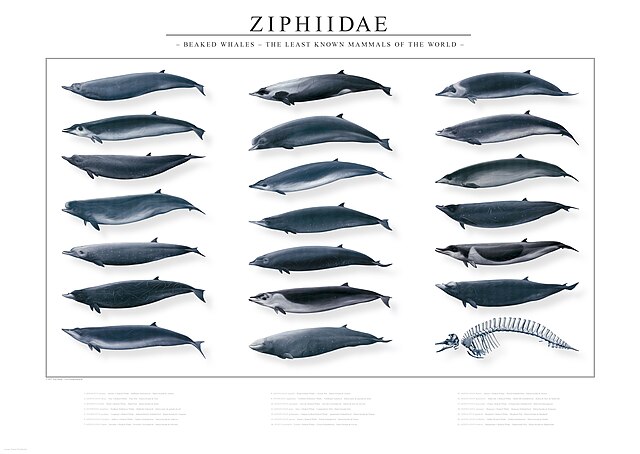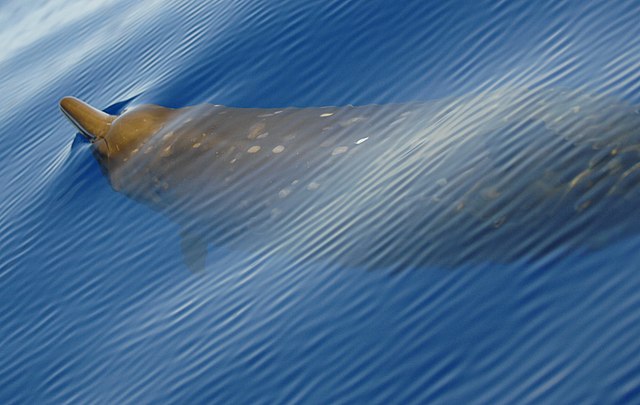The Cuvier's beaked whale, goose-beaked whale, or ziphius is the most widely distributed of all beaked whales in the family Ziphiidae. It is smaller in size than most baleen whales—and indeed the larger toothed cetaceans —yet it is large among the beaked whales and smaller cetaceans, appearing somewhat like a bigger and stockier bottlenose dolphin. Cuvier's beaked whale is pelagic, generally inhabiting waters deeper than 300 m (1,000 ft), though it has been observed closer to shore on occasion. In these offshore waters, Cuvier's beaked whale executes some of the deepest, longest recorded dives among whales, and extant mammals, at 2,992 m (9,816 ft), for 222 minutes. While likely diving to forage and hunt prey, such as cephalopods, and potentially evade predators, the frequency and exact reason for these extraordinary dives is unclear. Despite its deepwater habitat, it is one of the most frequently-spotted beaked whales when surfacing.
Cuvier's beaked whale
Skull of Cuvier's beaked whale
Skeleton of Cuvier's beaked whale
A whale breaching in Bay of Biscay.
Beaked whales are a family of cetaceans noted as being one of the least-known groups of mammals because of their deep-sea habitat, reclusive behavior and apparent low abundance. Only three or four of the 24 existing species are reasonably well-known. Baird's beaked whales and Cuvier's beaked whales were subject to commercial exploitation, off the coast of Japan, while the northern bottlenose whale was extensively hunted in the northern part of the North Atlantic in the late 19th and early 20th centuries.
All known beaked whales as of 2007
Blainville's beaked whale
Arnoux's beaked whale







